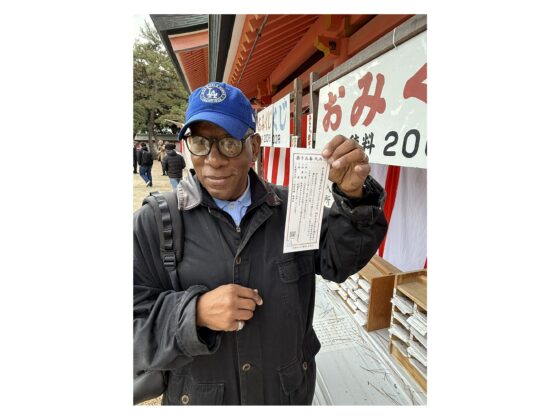Learn what was a hit and what wasn’t.
Crucial Conversations: Tools for Talking When Stakes Are High by Joseph Grenny, Kerry Patterson, Ron McMillan, Al Switzler and Emily Gregory
Reviewed by Jen Coleman
If there are such things as “classics” in business non-fiction, Crucial Conversations, first published in 2012, deserves a spot on that list. When I started talking to people about the book, I was amazed (and a little embarrassed) at how many people already had a copy. I highly recommend it to those not familiar with this quick read.
Crucial Conversations provides a digestible, actionable framework for immediately improving communication skills. Since I read the book, the authors’ contention has been at the forefront of my mind. They argue that reactions that restrict dialogue — blowing up and clamming up — are driven by fear. When you let that sink in, you can empathize with the person you are trying to connect with and understand what makes them afraid. This is the path to better dialogue. “When it is safe, you can say anything.” The book gives some wonderful suggestions for creating a safe environment and avoiding the “blow up” and “clam up” responses in both yourself and others. These are invaluable skills for life, both in and out of the office.
Becoming Coachable by Marshall Goldsmith and co-authors Scott Osman and Jacquelyn Lane
Reviewed by Gwen Mellor Romans
Becoming Coachable by preeminent coach Marshall Goldsmith is an excellent resource for professionals beginning their work with an executive coach. The book’s thesis is that, to “maximize coaching’s efficacy,” clients must be open — to change, to feedback, to taking action and to being held accountable.
Clients generally seek support through coaching when the status quo is no longer acceptable. That is different, however, than fully embracing change. The authors remind us that “without change, there is no growth.” They, therefore, encourage coaching clients to “resist resistance,” cultivate a growth mindset and seek to change purposefully.
Once coaching clients have committed to making changes, the next step is to solicit feedback on those aspects of their leadership style that need changing and actions they should take to maximize their impact. Identifying blind spots is an essential part of leadership development, so the authors encourage coaching clients to actively seek and welcome feedback and then separate the good feedback from the constructive.
The next step in a coaching engagement is to work with a coach to decide which behaviors the clients would like to change and then prepare to get to work by developing a detailed action plan. Taking meaningful action involves planning, preparing to make mistakes and discipline.
The final step to ensure a successful coaching engagement is to embrace accountability — before, during and after. Being accountable means creating and relying on an external network of people around the clients who want to see them succeed — colleagues, friends and family. It also means broadcasting their commitment to being held accountable.
Being open to change, feedback, taking action and being held accountable make for the underpinnings of a solid coaching engagement in which clients are more likely to ensure rapid, pragmatic and measurable change specific to their leadership performance.
Deep Work – Rules for Focused Success in a Distracted World by Cal Newport
Four Thousand Weeks – Time Management for Mortals by Oliver Burkeman
Reviewed by Marty Speight
How many books have been written on time management? Zillions? I chose these two for different reasons, and ultimately, I was surprised at my reflections after reading them.
“Arguably, time management is all life is.” Oliver Burkeman’s book is a philosophical rambling through pithy prose about our relationship with time. The four thousand weeks of the title is the premise that we humans have an average life span of just that; if one lives to the age of 77, it’s a 4000-week life, and ergo, we have only the average number of weeks remaining to do whatever it is we think we’re here for. We all know that life is finite with an unknown expiration date, yet somehow thinking about this in terms of the weeks dropping away, like sands in an hourglass, is both sobering and empowering. Even though Burkman is a recovering productivity consultant, he’s reluctant to give formulaic answers to how to “fix” our calendar systems, cope with information overload and get more done. In the end, he offers up a simple and powerful “ten tools for embracing finitude,” which are surprising in many ways. The overarching theme is to do less and carefully curate what gets your attention. I highly recommend this lovely treatise on time.
Cal Newport’s Deep Work stands in contrast. There is little philosophical in his approach; he is, after all, a computer science academic. He methodically defines his premise (deep work is “the ability to focus without distraction on a cognitively demanding task”), defends its value, rarity and meaningfulness, and then posits a set of four rules to succeed at the deep work game. Most of the book comes off as academic attitude written for an academic audience. He uses his self-success in academia as the most frequently cited proof of what works. Still, at the same time, he gives upwards of forty case examples, most of which are academics, journalists or famous writers (curiously, only three women make the cut). The “rules” could be helpful, but not in the way presented here. To wit, “decide in advance what you’re going to do with every minute of your workday,” like his other rules, comes off as rigid, unworkable and guilt laden. I cannot recommend this book. While the premise of doing goal-oriented, deeply focused and distraction-free work is relevant and vitally important, it’s too difficult to see how his rules apply to those outside the ivory tower.
Hidden Potential, The Science of Achieving Greater Things by Adam Grant
Reviewed by Stacey Milne
Nature or nurture? In his most recent book, Hidden Potential, the organizational psychologist and Wharton professor Adam Grant explores the roots of individuals and teams reaching extraordinary heights.
Beginning with Tupac Shakur’s poem, “The Rose that Grew from Concrete,” Grant shares scientific studies and brings them to life with stories of exceptionally talented people to show that it’s not where you start in life but about how far you grow. Growth requires a set of skills, structures and systems. The good news for all of us is that it’s never too late to build the skills and scaffolding to get unstuck and reach our fullest potential.
Hidden Potential is an enjoyable and motivational read. Grant keeps our interest with inspiring stories from a Harlem middle-school chess team to the drummer Evelyn Glennie to the baseball pitcher R.A. Dickey and leaves us with a practical list of actions for building character skills and motivational structures that we can all apply. Take the quiz to find out how to start unlocking your hidden potential.




